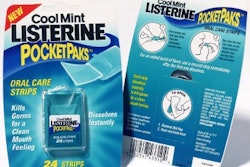When it rains it pours. That is what drug packaging people must be moaning. Not only are they trying to fend off the proposed Food & Drug Administration rule on package inserts, but they are also trying to beat back a second proposed rule that would force them to add information dealing with “anti-microbial resistance” to the inserts for a select group of antibiotics. Anti-microbial resistance—caused by too many patients taking too many antibiotics for inappropriate reasons—for viral infections, for example—has become a federal government cause celebre of sorts. The FDA and CDC released a wide-ranging Action Plan in February meant to galvanize the bureaucracy against the problem, which has rendered some antibiotics nearly useless. FDA’s proposed rule came out last September, prior to the publication of the Action Plan. But the notion of giving physicians and other healthcare professionals added information about anti-microbial resistance was endorsed in the Action Plan. Besides educating them, physicians could actually pull out an antibiotic product label and show a patient with a cold the warnings against misuse of the antibiotic. Sometimes physicians overprescribe antibiotics simply to get a demanding patient off their backs. A number of additions to the insert would be required by the proposal. A statement at the beginning of the label would state that inappropriate use may increase the prevalence of drug-resistant microorganisms and may decrease the effectiveness of the drug product. Another would indicate that the product should be used only to treat infections that are proven or strongly suspected to be caused by susceptible microorganisms. Additions would also have to be made to the “Indications and Usage” and “Precautions” sections. Antibiotic manufacturers directed a hailstorm of criticism at the FDA for the proposal. Kathleen Day, senior director of global regulatory affairs for Pharmacia Corp., Kalamazoo, MI, calls the proposed rule “misguided” and believes it may contain information that is “offensive” to healthcare professionals. She adds that the information that would have to be added to the label is “repetitive” and “would clutter the label without adding value.” Laurie Smaldone, senior vice president at Bristol-Myers Squibb Co., New York, NY, adds that her company “believes this labeling approach interferes with the practice of medicine since the choice of antibiotic treatment should be made by the physician after weighing the overall benefits and risks to the patient.” The FDA will have to contend with opposing views, though. Peggy Carver, president of the Society of Infectious Diseases Pharmacists, says her group wants the proposed rule expanded to additional products, for example, those that treat mycobacterial infections. Otic, ophthalmic and topical anti-microbial agents should also be covered, she adds.
Upset over inserts (sidebar)
Stop bugging us!
Oct 31, 2001
Machinery Basics
List: Digitalization Companies From PACK EXPO
Looking for CPG-focused digital transformation solutions? Download our editor-curated list from PACK EXPO featuring top companies offering warehouse management, ERP, digital twin, and MES software with supply chain visibility and analytics capabilities—all tailored specifically for CPG operations.
Download Now
Researched List: Engineering Services Firms
Looking for engineering services? Our curated list features 100+ companies specializing in civil, process, structural, and electrical engineering. Many also offer construction, design, and architecture services. Download to access company names, markets served, key services, contact information, and more!
Download Now
Downloads





















